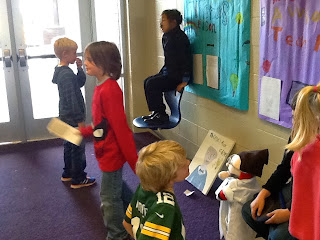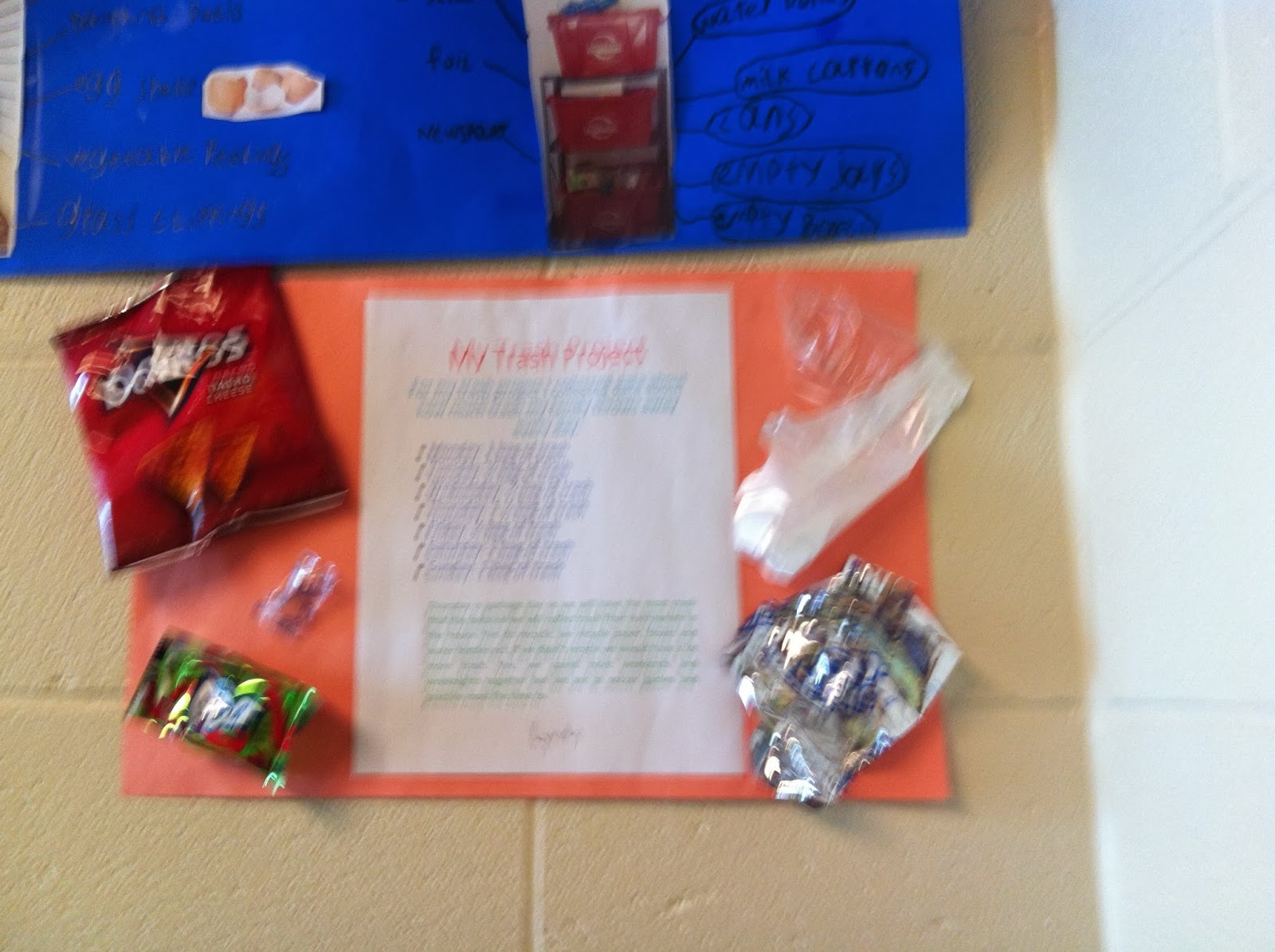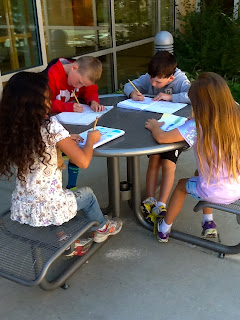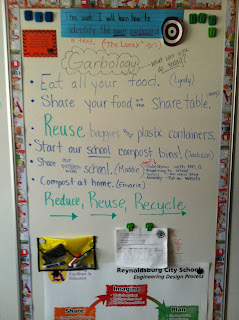Our Field Trip to DAWES on Friday, May 9th
Working hard tracking our Iditarod Mushers!
3-20-14
Mrs. Zwick introduces The Last Great Race on Earth, The Iditarod to all 100 second graders.
Putting our Community together
What does our community NEED? What do we WANT?
A lesson of NEEDS and WANTS in a community.
 |
| All of the places marked with an "R" is what our class chose. |
Our engineer visitor and our second graders constructed a community. We went from rural, suburban, to urban in a matter of years. WILD!
Valentine STEM Challenge

Try these experiments this Valentine's Day!
Snow Rollers at SRE
Engineer visitors 1/13
 |
| Launching a catapult. A catapult is made out of simple machines. |
 |
| Reading the story, I'm an engineer and I don't drive a train. |
 |
| A rolled up piece of paper holding a heavy brick. |
 |
| TADA! It worked! |
We tried to trap the gingerbread man!
December STEM Challenge
Based on the fable The Gingerbread Man
Given 12/2
Due 12/16
Visiting the Third Grade Living Museum (10/25)
 |
| Aiden listening to Benjamin Franklin. |
 |
| Anthony and Grace learning about Albert Einstein. |
Wetland Weather Recording on Friday, October 11th
 |
| Recording Observations... |
 |
| Finding someone to share with. |
 |
| Recording Wind Direction... |
 |
| Recording Air and Water Temperature... |
 |
| Recording Cloud coverage... |
 |
| Drawing Observations... |
 |
| Finding a quiet space to share data with a buddy... |
Trashless Tuesday!
 |
| Top Row: Monday's Trash Bottom Row: Trashless Tuesday Trash |
Friday (9/13) became a "Fusion Friday" for the second graders. We built our classroom compost bins. All the second graders got together to read Compost Stew in Mrs. Ball's room. Then we took a trip out to our school compost bin (it's located by the dumpsters). The teachers introduced the school bin, noting it is ONLY for food and paper waste, no worms necessary in this bin. Then we headed back to our classrooms to build our worm bins.
We started with newspaper and water.
After we had a good consistency with the first to ingredients, we took a break. During our "break" each student received one red worm. Students made observations about their worms and recorded information about their worm, such as, how does it react to light, how long is it, where is the head, label the different parts, how does it react to water, etc.
After we were done observing the red worms, we added the final piece to our compost bins: organic soil and 20-30 red worms.
 |
| All 100 second graders listening to Shell Silverstein's poem, Sarah Cynthia Silivia Stout would not take the garbage out. |
 |
| The children listening to Mrs. Ball read Compost Stew. |
Landfill Recap.
I'm sure your little one has told you all about our trip to SWACO today! Here are some pictures and videos that captured a few moments.
 |
| Our tour began in a classroom. |
Sample Design Challenges for September
STEM Challenge
This past week (9/3-6) your second grader went to the wetlands to make animal track castings out of plaster. They turned out wonderful! Friday afternoon we wrote all sorts of wonderful stories about the different types of tracks we found. Since it was such a beautiful day we decided to write outside in the courtyard.
 |
| Various deer prints |
 |
| Mallard Print |
Friday afternoon (8/30), all 100 second graders got together in the gym and compiled the garbology data. The students broke off into 25 groups, four students in each group. Here is a glimpse into what it looked like.
This morning (8/28) we kicked off our first fusion unit: CONSERVATION! Mrs. Martindale taught us how to be garbologists (the study of garbage). We used trash bags that were collected from lunch yesterday (8/27). After the kiddos suited up we began sorting all the trash; styrofoam, plastic, aluminum, cardboard, paper, liquids and food. Here is what it looked like.
 |
| Noah and Grace trying to decide how they are going to get the food out of the bag. |
 |
| Mr. Meirs lending a hand with Aiden, Marcus, and Andrew. |
 |
| Nevaeh and Evelyn emptying all the milk into the liquids bucket. |
 |
| Mrs. Martindale's group is shocked at the amount of styrofoam they counted! |
What did we learn from our garbology study?
Your children came up with every single one of these ideas (and many more)! I am absolutely impressed at their work today! It was a great start to our first problem-based unit.



























































































































































No comments:
Post a Comment